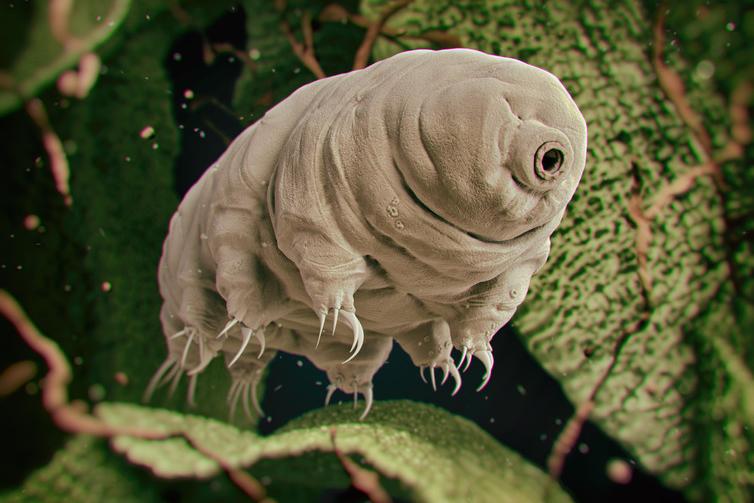Scientists fire world’s most resilient creature from a Nasa gun to find out if aliens could travel the stars
Tardigrade creatures have already survived a crash on the moon in 2019

Scientists have shot tardigrades, one of the world’s most indestructible life forms, out of a gun in order to test whether alien microbes can start life on other worlds.
Tardigrades are able to survive extreme temperatures and the vacuum of space, meaning they can be used to test the notion of panspermia – where life can move between worlds via a comet or meteorite.
In order to put this to the test, researchers from the University of Kent shot frozen tardigrades from the same kind of two-stage light gas gun that Nasa uses to simulate impacts in space.
The creatures were fired at targets made of sand at various velocities, where it was shown that tardigrades can survive impacts above 1,620 miles per hour (728 meters per second) but if that number increases to 2,000 miles per hour – where pressures can reach 1.14 gigapascals – the creature is unlikely to make it to the planet alive.
This means it is unlikely, but not totally impossible, for the animals to survive the trip across space.
Meteorites impact Earth at speeds of more than 11 kilometres per second, while on Mars they hit at approximately eight kilometres per second. While this is too fast for tardigrades to survive, it’s possible that one hitting Earth of Mars would experience lower shock pressure.
There is also the moon; approximately 40 per cent of material that hits the moon is slow enough for a tardigrade to survive on it, which would allow life to jump from one planet to another celestial body, on a path to travel further into space.
In 2019, the Israeli lunar lander Beresheet crashed on the Moon and populated the lifeless globe with tardigrades.
Tardigrades have the striking ability to go into deep hibernation, where they can turn off biological processes and awaken them later. While the tardigrades are not ‘living’ on the Moon, it is likely they will remain in that state for years.
“What this paper is showing is that complex multicellular animals cannot be easily transferred,” Charles Cockell, an astrobiologist at the University of Edinburgh, told Science magazine.
“In other words, Earth is a biogeographical island with respect to animals. They’re trapped, like a flightless bird on an island.”
The study, “Tardigrade Survival Limits in High-Speed Impacts—Implications for Panspermia and Collection of Samples from Plumes Emitted by Ice Worlds”, was published in the journal Astrobiology.
Subscribe to Independent Premium to bookmark this article
Want to bookmark your favourite articles and stories to read or reference later? Start your Independent Premium subscription today.

Join our commenting forum
Join thought-provoking conversations, follow other Independent readers and see their replies